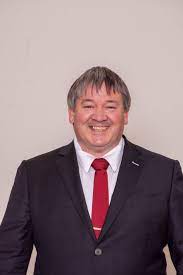Australia’s resources minister has issued a formal notice of intent to establish a radioactive waste site on the South Australian Eyre Peninsula, clearing the way for land acquisition to begin following a four-decade process.

Amendments to the National Radioactive Waste Management Act enabling establishment of the facility at Napandee, a farming property in the Kimba district, passed both houses of parliament on June 22.
“This is the next step in progressing this nationally significant infrastructure project, which successive governments have been working on for more than 40 years,” resources minister Keith Pitt said on Wednesday.
“I have reviewed the relevant information, which has informed my decision to proceed. As such, I am issuing a notice to declare Napandee, and will seek the views of those with rights or interest in the site.”
The waste management facility will be used for the disposal of low level radioactive waste and temporary storage of intermediate level waste, which is currently spread over more than 100 locations across Australia, Mr Pitt said.
The site will be privately operated with design and development led by the Australian Radioactive Waste Agency (ARWA).
‘Safe and secure’
Mr Pitt said the government had spent six years working with local communities and carrying out technical studies and it was clear that radioactive waste could be safely and securely stored at Napandee.
He said surveys showed 61 per cent of people in the Kimba LGA and 59 per cent of local businesses were in favour or the program.
Kimba Mayor Dean Johnson welcomed the decision as a significant step forward and one that he and the community supported.
“It’s one step closer, it’s a nationally significant infrastructure project which ultimately has benefits for all Australians,” he told Government News.
Mr Johnson said as well as creating jobs and boosting the economy, the government had offered a package of benefits for the region in exchange for hosting the site, including a $20 million community fund once the site was operational and $8 worth of community business and training development over the next four years.
He admitted it had been a “long process for our community”.
“Honestly there’s a bit of exhaustion in the community. This has been a very long process so its nice to have a bit of finality, its not completely over yet but it’s a significant step forward and that’ll be relief for most in our community.”
Opposition from indigenous community
However the project is opposed by the No Dump Alliance, which says it doesn’t want south Australia to become nuclear dumping ground, as well as members of the local indigenous community, the Barngarla People, who are crowdfunding for a legal challenge.
Local resident Peter Woolford is President of the No Dump Alliance, which he says have over 400 members.
Mr Woolford says the group has concerns about provisions to store intermediate level radioactive waste and reprocessed fuel rods from overseas at the dump.
“Why would you transfer it from where it is now from where it is currently secured (in the ANSTO facility in Sydney) in the best facility and temporarily store it in a shed in the Kimba farming community for several decades,” he told Government News.
He also said the government hadn’t listened to the views of opponents, and the proposed facility had caused a damaging split in the local community.
“This is one step closer to South Australia being the nuclear waste dump state of the country and one step closer to a court case.”
Mr Pitt said the Australian Government would now begin the process of acquiring the site, along with a period of further consultation and regulatory applications.
“The application and approval processes will take a number of years to be completed,” he said.
More than 80 per cent of Australia’s radioactive waste associated with nuclear medicine.





The world is now impacted by nuclear waste, the dilemma, as to where to put it, or who is responsible for it? Why not responsibly ban or suspend uranium mining and export temporarily until a solution is found. We want to dispose of the stuff, not build monuments to it. We may need nuclear medicine in our lifetime, but a disposal cemetery or resting place, has not been provided. We have the duty of care in my opinion. Why sell uranium to the world, without a long term responsible solution to nuclear waste disposal?
Please do not approve any new uranium mines or extensions without capacity to store for disposal nuclear waste, at end of mine life or progressively, as part of rehabilitation, in Australia.
If the proposed site is a pastoral lease then turning it into a dump contravenes the pastoral lease act 1989, is the why the SA Government want to change the pastoral lease act? Removing the words conservation from the act is just one of the proposed amendments along with 100 year leases. If any holder of a pastoral lease allows a dump then they are contravening the act and should forfeit said lease..